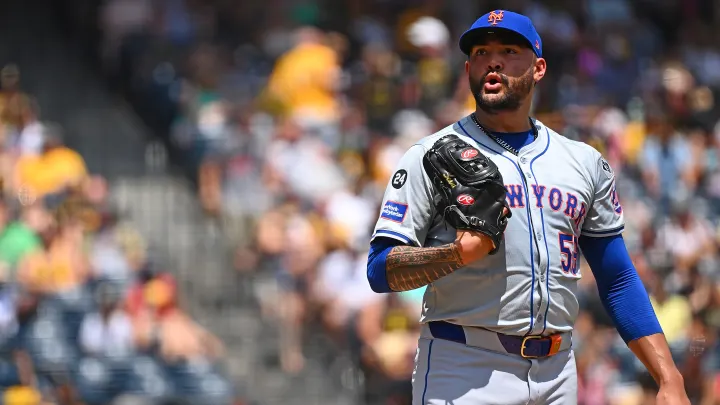The New York Mets are facing a critical challenge as the trade deadline approaches: shoring up their bullpen. Despite recent victories over the Washington Nationals, where their relief corps managed to escape with minimal damage, the Mets recognize the urgency to bolster their bullpen depth.
Jim Duquette, a former Mets GM and current SNY analyst, recently floated a trade proposal involving the Mets and the Cleveland Guardians, who currently lead the AL Central. Duquette’s proposal centers around sending starting pitcher Sean Manaea to Cleveland in exchange for relief pitchers Scott Barlow and Sam Hentges, along with a prospect. While Duquette is personally satisfied with this hypothetical deal, it has sparked considerable debate and skepticism among analysts and fans alike.
A primary point of contention raised by Andy Martino is the potential impact of losing Manaea from the Mets’ starting rotation, especially considering his postseason experience and the uncertain health status of other starters. Martino argues that having a reliable arm like Manaea’s in the postseason bullpen could prove invaluable, provided the Mets make it that far. However, Martino also acknowledges the counterpoints regarding the necessity of ensuring enough starting pitching depth, especially given the Mets’ injury history this season.

ette himself acknowledges the caveat that his proposed trade hinges on the health of Kodai Senga, who has yet to pitch for the Mets due to injury. This uncertainty underscores the risk involved in any trade strategy dependent on the availability of a sidelined player.
From the Guardians’ perspective, despite their strong bullpen performance this season, there are concerns about subtracting key relievers amidst their successful campaign. Their winning formula, albeit unconventional at times, has proven effective, leading to questions about whether they should disrupt their bullpen stability to bolster their starting rotation.
One complicating factor in any potential deal involving Sean Manaea is his player option for next season, which adds financial uncertainty. While $13.5 million may seem reasonable, the Guardians typically shy away from such salaries, which could necessitate negotiation or financial concessions from the Mets to facilitate the trade.
Amidst these considerations, there is a prevailing sentiment among some analysts that the Mets should refrain from disrupting their starting rotation, which has shown promise despite ongoing bullpen concerns. Jose Butto’s emergence as a viable relief option further reinforces the argument that the Mets may not need to sacrifice a starting pitcher for bullpen reinforcements, especially with several teams falling out of playoff contention and potential trade opportunities emerging from non-contending teams.
In conclusion, while Duquette’s proposed Mets-Guardians trade presents an intriguing scenario and addresses immediate bullpen needs for the Mets, it also raises significant questions and reservations. The delicate balance between addressing bullpen deficiencies and maintaining starting pitching depth, coupled with uncertainties surrounding player health and financial implications, complicates the feasibility and desirability of such a trade.
Ultimately, while trade discussions and proposals are part of the speculation and excitement surrounding the MLB trade deadline, the practicality and impact of each potential move must be carefully evaluated to ensure it aligns with the long-term goals and competitive strategy of each team involved.

